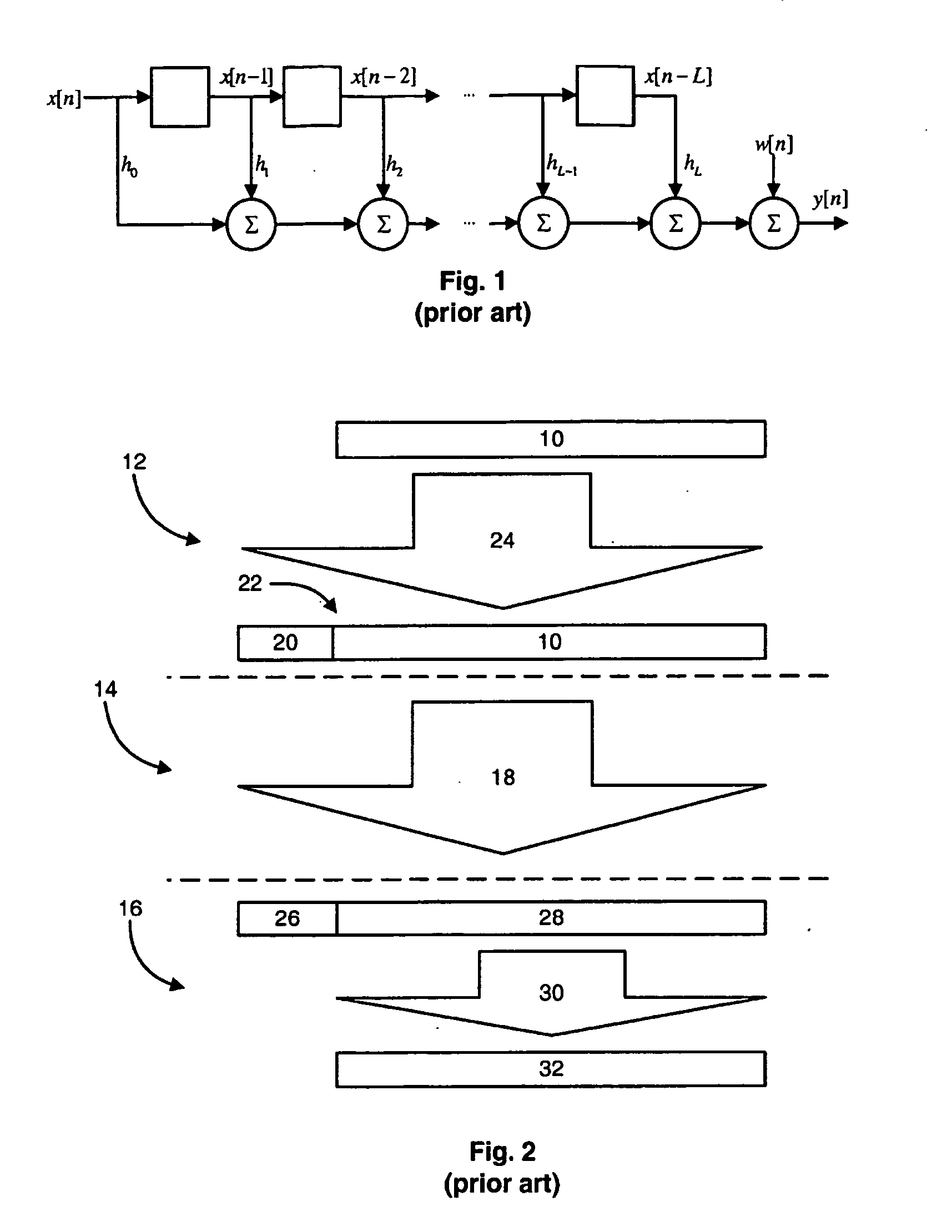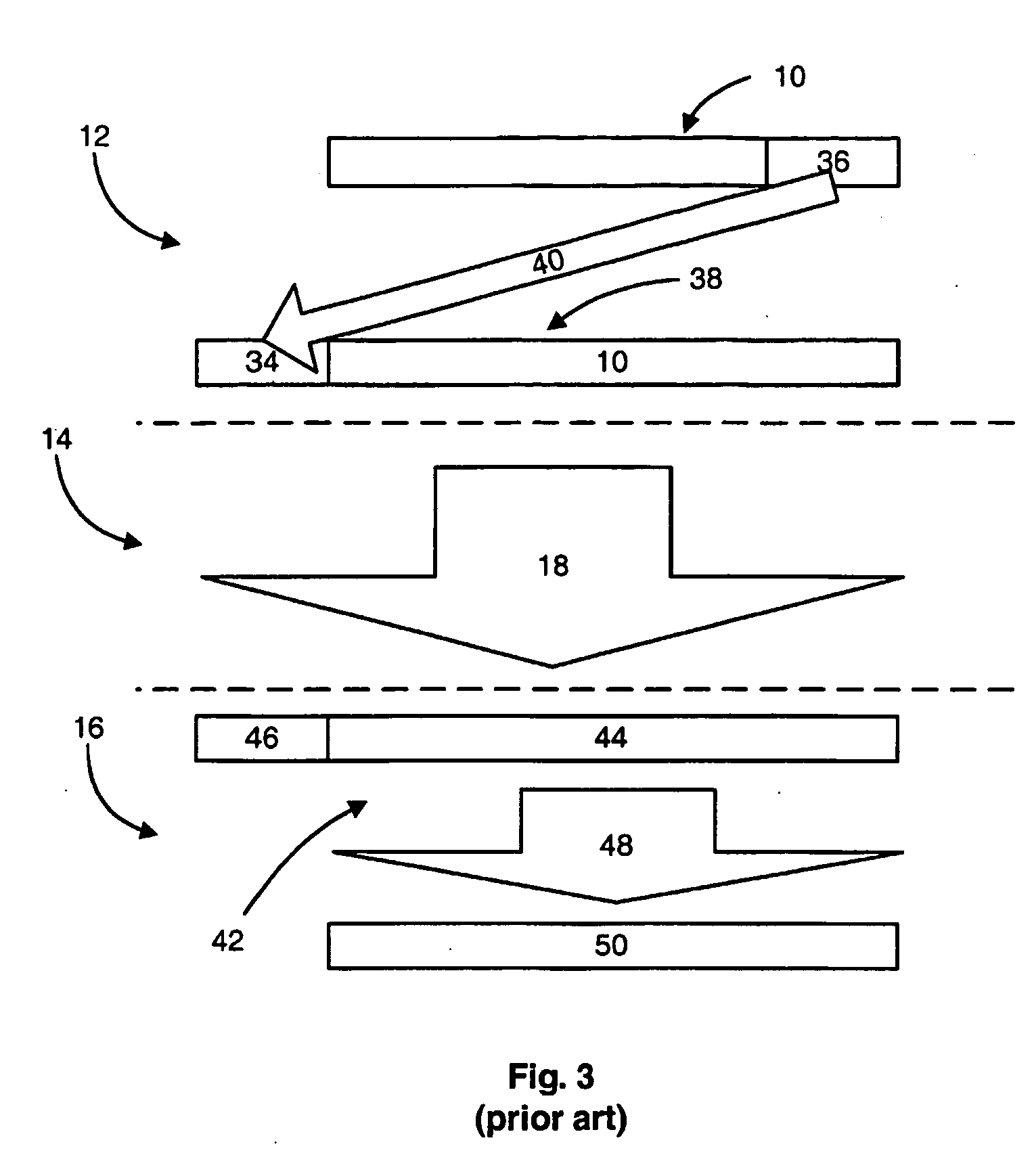Frequency domain equalization in communications systems with scrambling
- Summary
- Abstract
- Description
- Claims
- Application Information
AI Technical Summary
Benefits of technology
Problems solved by technology
Method used
Image
Examples
Embodiment Construction
[0040] As discussed above, to date frequency-domain equalization has not been possible in DS-CDMA systems. In accordance with embodiments of the present invention, to apply frequency-domain equalization to such a DS-CDMA system, either the transmitted data block is augmented before it is scrambled by appending a prefix and a suffix known to the receiver or the transmitted data block is augmented after it is scrambled but prior to transmission so that it has a scrambled cyclic prefix. In the former case, the receiver synthesizes the prefix, the data block, or the suffix that would have been received if the augmented transmitted data block after scrambling had had a cyclic prefix. In each variant embodiment of the invention the diagonalization process described above is applied to a received block or a synthesized block. To simplify the following discussion, it is assumed that the receiver “knows” (has previously determined) the channel response.
[0041] In the following description an...
PUM
 Login to View More
Login to View More Abstract
Description
Claims
Application Information
 Login to View More
Login to View More - R&D
- Intellectual Property
- Life Sciences
- Materials
- Tech Scout
- Unparalleled Data Quality
- Higher Quality Content
- 60% Fewer Hallucinations
Browse by: Latest US Patents, China's latest patents, Technical Efficacy Thesaurus, Application Domain, Technology Topic, Popular Technical Reports.
© 2025 PatSnap. All rights reserved.Legal|Privacy policy|Modern Slavery Act Transparency Statement|Sitemap|About US| Contact US: help@patsnap.com



